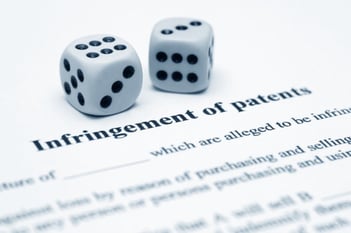- August 31, 2022
- Clayton Prickett
- Intellectual Property
 Once a person or company is found liable for infringing on another's patent, damages are awarded against the infringer to compensate the patent holder for any loss caused by the infringement. These damages are known as compensatory damages. Under 35 U.S.C. § 284, the compensatory damages may be enhanced up to three times the compensatory award depending on the nature of the infringement. The trial court judge decides whether to increase compensatory damages. While there is no statutory standard that dictates the circumstances under which damages are enhanced, courts approve such increased awards where the infringer acted in wanton disregard of the patentee's rights, that is, where the infringement is willful.
Once a person or company is found liable for infringing on another's patent, damages are awarded against the infringer to compensate the patent holder for any loss caused by the infringement. These damages are known as compensatory damages. Under 35 U.S.C. § 284, the compensatory damages may be enhanced up to three times the compensatory award depending on the nature of the infringement. The trial court judge decides whether to increase compensatory damages. While there is no statutory standard that dictates the circumstances under which damages are enhanced, courts approve such increased awards where the infringer acted in wanton disregard of the patentee's rights, that is, where the infringement is willful.
What is Willful Patent Infringement?
In general, judges determine whether to increase damages based on the egregiousness of the defendant's conduct. This determination looks at all factors that make the defendant's conduct more culpable, as well as factors that are mitigating or ameliorating. Because no statutory framework exists to determine whether the defendant's infringement was willful, courts have developed nine factors to determine whether enhanced damages are appropriate.
- Whether the infringer deliberately copied the ideas or design of another (note that "ideas" and "design" would encompass, for example, copying the commercial embodiment, not merely the elements of a patent claim);
- Whether the infringer, when she knew of the other's patent protection, investigated the scope of the patent and formed a good-faith belief that it was invalid or that it was not infringed;
- The infringer's behavior as a party to the litigation;
- The defendant's size and financial condition;
- The closeness of the case;
- The duration of the defendant's misconduct;
- The remedial action by the defendant, if any;
- The defendant's motivation for harm; and
- Whether the defendant tried to conceal its misconduct.
Read Corp. v. Portec, Inc., 970 F.2d 816, 827 (Fed. Cir. 1992).
Avoiding Willful Infringement
While the trial court's decision to award enhanced damages is fact-specific and depends on the circumstances of the case, there are things that a defendant can do to reduce the likelihood of the court awarding enhanced damages under Section 284. One way to avoid willful infringement is to conduct a good-faith, objective assessment as to whether a product infringes on the patent of another. For example, this can include engaging an experienced, outside patent attorney before releasing a new product into the market (also known as a "right-to-use study").
A defendant's conduct after a lawsuit is filed against it can also weigh heavily on the court's decision on whether to award enhanced damages. When the evidence of the defendant's infringement is strong, the defendant should be actively engaged in good-faith settlement discussions with opposing counsel to minimize the risk of compensatory and enhanced damages.
If the defendant elects to try the case all the way to the jury, then the defendant must act in good faith during the course of litigation. A defendant that withholds or destroys documents relevant to the plaintiff's claim is, unsurprisingly, more likely to have enhanced damages awarded against it than a defendant who did not. On the other hand, courts have found that a defendant who voluntarily ceases production of the product in question for the duration of the lawsuit should have less or no enhanced damages awarded against it.
Deliberate Indifference
Just as the law prevents Person A from willfully infringing on Person B's patent, the law also prevents Person A from inducing a third party to infringe on Person B's patent. This is known as "induced infringement." To impose liability on Person A for induced infringement, the law requires knowledge that the induced acts constitute patent infringement.
It is not enough to show deliberate indifference to a known risk that a patent exists. If knowledge of infringement is not shown, then the patent owner must prove willful blindness, which requires that (1) the defendant must subjectively believe that there is a high probability that a fact exists and (2) the defendant must take deliberate actions to avoid learning of that fact. It is insufficient to show that defendant merely knows of a substantial and unjustified risk of such wrongdoing.
In sum, the statutory framework protecting patent holders against infringement is designed both to protect the patent holder and, if appropriate, to punish the infringer for willfully infringing on the patent rights of another.
